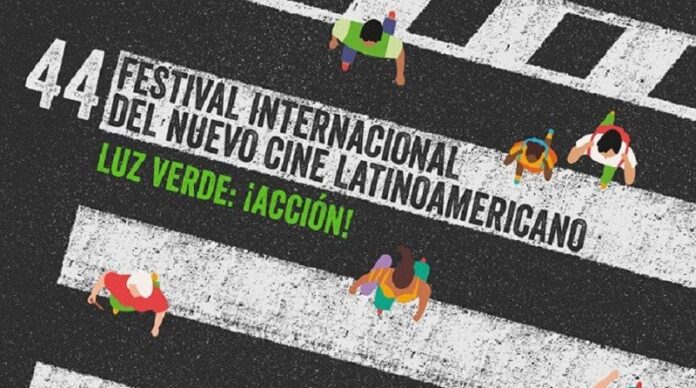
By Jennifer Ruth Hosek
HAVANA TIMES – The 44th edition of the Festival of New Latin American Cinema taking place in Habana from 8 to 17 December seeks to bring cinema to a broader public–by bringing movies into the streets. Under the Festival’s slogan “Green Light: Action!” The Cuban Film Institute (ICAIC) created a “cinema district.” Avenue 23 was closed between Streets 10 and 12, in front of the film industry’s iconic headquarters. Car traffic made way for an open-air screen and stage extending across this main thoroughfare with seating for over a 100, as well as concession stands, plenty of standing room, and auxiliary stages for various events including cinema for children.
Opening night on the crosswalk stage featured the now-beloved classic Tomas Gutierrez Alea y Juan Carlos Tabío’s Fresa y Chocolate (Strawberry and Chocolate) (1993), celebrating its 30-year anniversary, and Ernesto Daranas’s hard-hitting feature Los díos rotos (Fallen Gods) (2008) that took many prizes at the 2008 Festival. Bands known for movie soundtracks also performed live. This public event started at dusk outside of Cine Chaplin, Cuba’s premiere art cinema, which was hosting the strictly invitation-only official inauguration with Chile’s Oscar selection Los colonos (2023) and a live band rendering the classic Festival musical leitmotiv.
This inside-outside scenario made for an inadvertent test of privilege and community. The internationally ubiquitous white plastic chairs—many labelled “reserved”—remained empty for some time despite standing onlookers. Slowly, these average movie goers dared to sit comfortably to enjoy the show. When Chaplin’s invited guests including young Cuban filmmakers, foreign filmmakers, and national and international nomenclatura spilled out of the cinema, those drawn to the outdoor event remained standing behind the seated viewers in front.
The peaceful crowd ranging from what looked to be fashionable students to families with toddlers to well-known local directors and personalities to bicyclists-turned-movie viewers to roughshod local senior citizens who had wandered into the sea of chairs looking for their next drink made for a contemporary ajiaco à la Ortiz. Privileged, El Vedado nevertheless (still?!) presents very well against most public places in Latin and North America for safety and camaraderie.
The heterogeneous crowd exuded mutual respect and easy-going, light gregariousness. An older Cuban barrio resident was politely holding chairs for four “Palestinos” who had gone to find dinner. He was not deploying the Habanero term for eastern Cubans transplants; these were actual Palestinians who are studying medicine at ELAM. The excited band leader wanted to be sure that the policed safety barrier at the corner of 10 and 23 was not keeping eager but unwanted public out. It was not. He asked for any song from the public. They asked for love songs and classics. Toddlers danced with parents, parents with parents, teens near each other.
That night indeed brought cinema to the streets, although perhaps not without complaint. Earlier in the week, a driver of a late-night Gazelle minibus swore mightily to a policeman enforcing the detour. Such irritation among economically overwhelmed Cubans is part of why ICAIC has decided to try a return to the open-air cinema tradition of the 1960s and 1970s. The 7th Art is supposed to dialogue with the people, as ICAIC’s current president told me. The weather that started off supportive seemed downright dissenting in later days, as heavy rains forced outdoor screens to be tucked under porticos and put away entirely, not to mention tragically flooding out parts of Alamar on the east side of the capital. The climate change happening everywhere is adding to the difficulties here, including in the cultural domain.
Most of Cuba’s full-length works were co-productions, attesting to the financial difficulties that are impacting all aspects of the country. Two Cuban features were by directors of the ICAIC-supported documentaries about the covid-19 pandemic, Alejandro Gil’s Soberanía (2021) and Maritza Ceballo and Jonal Cosculluela’s Volveran los abrazos (Hugs will return) (2021) . Gil’s AM-PM, based on Amílcar Salatti’s award-winning screenplay, interweaves stories of Habaneros whose intimate relationships are deformed by economic demands and personal tragedies. The film’s largely dramatic tone expresses Gil’s stated hope for humans to be sensitive to the vulnerabilities of others. As with many Cuban films, AM-PM‘s gender politics is both heartening and jarring. A 30-something woman solves her family’s housing problems through solidarity with a female senior citizen, ignoring a male neighbor’s self-interested judgments. Yet, a teenage rape victim hides her trauma from her beloved father, suggesting that sexual violence taints the victim or perhaps is not that horrific after all.
Maritza Ceballos’s Aislados Festival premiere at Cine Chaplin was cut short by a blackout, highlighting the imperfect cinema conditions in an otherwise typically agreeable, enriching, and politically relevant Latin American cinema festival. According to Ceballos this feature “habla sobre la pérdida del ser amado y como encontrar la esperanza para continuar adelante en medio de un entorno desesperanzador como fue la pandemia.”
Aislados interweaves pandemic tales, a topic that the director knows particularly well, having embedded at the IPK hospital during the pandemic, filming up-close and personal in the covid ward in full PPE before the highly successful Cuban vaccines became available. A heartwarming narrative relates the growing bond between a young girl and her crotchety grandfather turned guardian as her mother/his daughter struggles in hospital. A female patient in the IPK’s covid ward learns to her great relief that her female partner in intensive care will recover and she is released home–to precisely the little girl of the previous tale. Aislados brings the pandemic that now seems so eerily faraway again so close. As if entering an amnesiac fever dream, viewers relive the enormities of non-human actors on our lives, influences that we seeming prefer to ignore.
The two other full-length Cuban features place 40-something female protagonists front and center in quite distinct ways. Patricia Ramos’s fiction Una Noche con Los Rolling Stones explores a mid-life crisis of a female protagonist against the impactful visit of the iconic band in Cuba during the hopeful Obama years. The luscious photography and soundtrack that show Havana in its best touristic light makes for a touching and enjoyable film that importantly engages with a female subjectivity. Alán González’s La mujer salvaje (Wild Woman), which premiered at TIFF in September 2023, is a hard-hitting, gritty, and ambivalently optimistic story that vacillates on the hard edge of feminist exposition. One of the Festival programmers captures it well as “a symbol of rebelliousness and emancipation without stale or sweetened dialogue.”
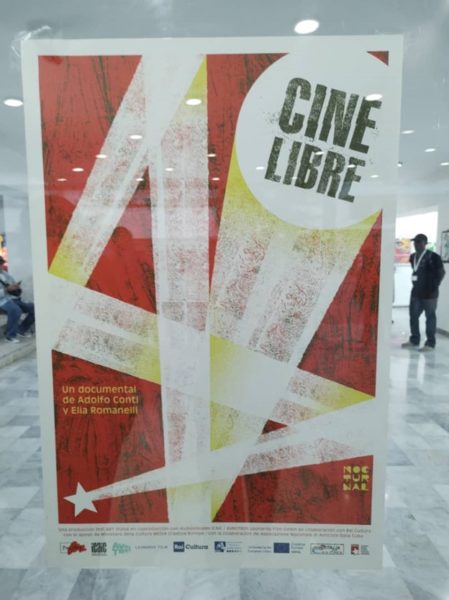
Adolfo Conti and Elia Romanelli’s beautifully successful Cine Libre inadvertently paid homage to Espinosa’s “For an imperfect cinema” (1969) at its Cine Chaplin world premiere when a pre-post-production iteration was projected. The Italian, German, Cuban documentary chronicles Revolutionary Cuba’s movie poster tradition by narrating a four-musketeer troupe of contemporary artists who embed Cuban film history within a graphic novel style poster series. With wit and flair, the film shows the Cuban movie poster aim to inform–in one unique, artistic rendering—the essence of each upcoming film. This advertising mission daringly cast aside the formulaic Hollywood-style poster genre that sold with boilerplate sex and star appeal, creating art in the process.
Among the many excellent documentaries of the Festival, the co-production Cine Libre is particularly worth mentioning because UNESCO registered Cuba’s movie posters as Documentary World Heritage last May. Graphic arts specialist in charge of Cuba’s posters, Sara Vega, spoke eloquently at the inauguration of the Centro del Cartel Cubano de Cine (23 between 10 and 8), incorporating ideas from artists abroad and present. Hand-screened on low-quality paper, even newsprint, this artisanal art has been produced in the same atelier since 1959, as graphic artist Pepe Menéndez pointed out from the crowd. These posters that color public streets and private homes further visibilize ICAIC’s project of cinema for the people.
[Editor’s Note: two awaited Cuban documentaries were censored from this year’s festival, something that seems to happen every year. ”Llamadas desde Moscu” (Calls from Moscow) directed by Luis Alejandro Yero and “La Habana de Fito” (Fito Paez’s Havana), by Juan Pin Vilar should be mentioned when you talk about Cuban productions. They joined last year’s censored Cuban films: “Vicenta B”, by Carlos Díaz Lechuga and “Corazón Azul” (Blue Heart), by Miguel Coyula. They all touch on subjects and criticisms that the authorities prefer to ignore.]
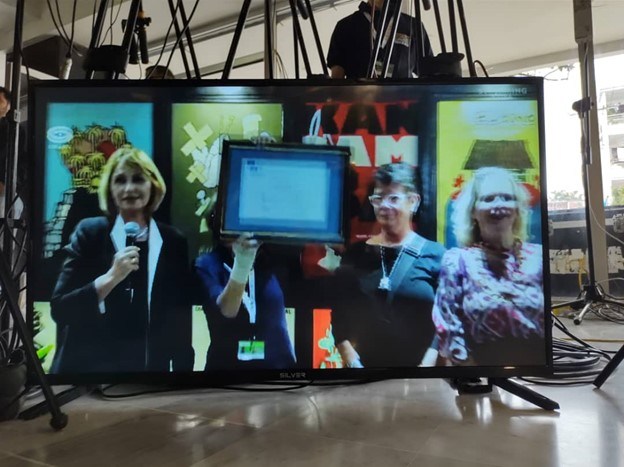
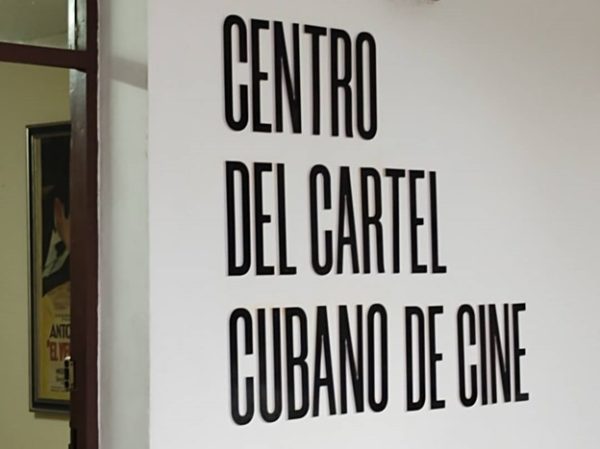
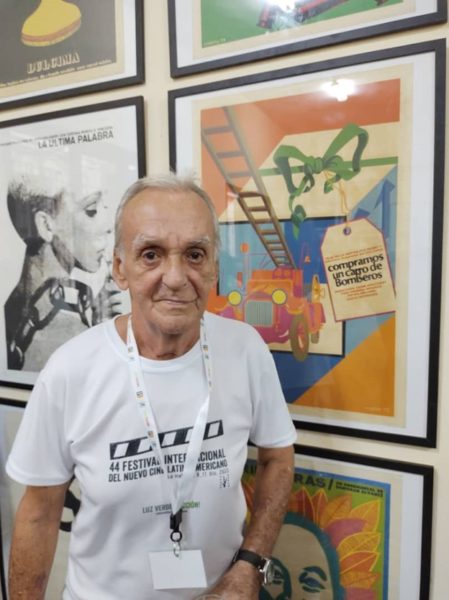
Smaller and more budget-conscious than in pre-covid years, the 2023 New Latin American Film Festival offered a significant array of films from many countries, a range of contemporary debates including thorny concerns around censorship (See Daranas at Asamblea de Cineastas Cubanos: media streaming, and generative AI; an innovative move to favor cinema over traffic; and its usual verve—which continues to bring international audiences, particularly those with political grounding, to the island. ICAIC plans to follow up end of March with a first annual festival of Cuban cinema, some of it likewise in the streets.
Read more from Cuba here on Havana Times


